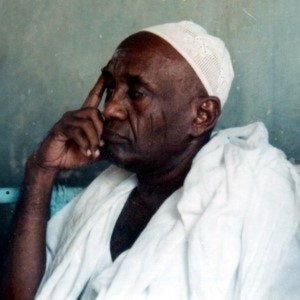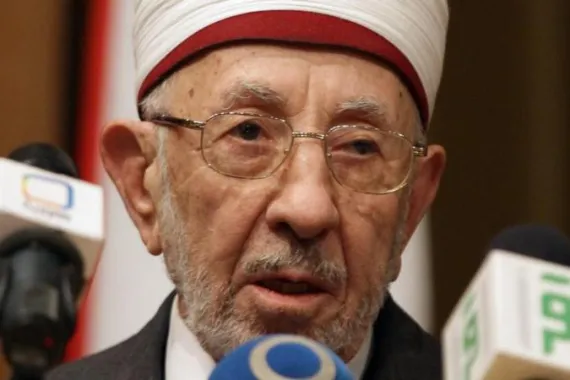
Returning now to the story of violence, I maintain that examining this issue and its relationship to Islam is a supreme scholarly necessity appropriate to the phase we are living in. What we have witnessed in ISIS and Al-Qaeda, and their predilection for suicide can only be founded upon a prior religious belief that holds that the reward for this act is ‘Paradise’.
BY SAMEH ASKER
THE ISSUE IS THEREFORE not limited to support and financing, nor even to ‘misconceptions’, for the sense of certitude that the suicide bomber has reached far outweighs any doubts one may have as to his misconceptions. The system that the ISIS suicide bomber goes through is a highly organized one and avails itself of rulings convincing enough to close off all channels of doubt.
What is surprising is that this has happened in an era of the Internet, where obtaining information is easier than ever before, and thus there is no argument here for why doubt and hesitation fails to emerge among ISIS, as if somehow the suicide bomber who experiences 1% doubt or less will not go on to commit suicide and blow himself up amid the infidels when he sees them. Even if we say that this action takes place as a result of the influence wielded by the organisation’s leaders over the emotions of their students, just as a person hates so also does he love, and just as ISIS hates its opponents and calls them infidels whose blood is lawful, there is also the possibility that members of ISIS hate some of their own leaders and do not trust them. It is simply not enough to say that the elements of the groups love their leaders. Gaining control of hearts and minds is no easy matter, and even if this can be temporarily achieved there is no reason why this should endure.
The system that the ISIS suicide bomber goes through is a highly organized one and avails itself of convincing rulings
The biggest problem in Islamic thought, which I stress repeatedly, is one that must be studied and discussed boldly. I have striven to analyse this in two books: Religion and Reason and Unmasking the Jurisprudence of the Imam, which is that the history of Muslims, from the very beginning has been dominated by politics and war. Consequently, talking of a ‘rupture’ here is not enough. It would constitute a rebellion and a departure from the true Islam of the masses, and intellectuals should not be content with providing some ‘interpretation’ of this period of time and consider its features limited to some infallible personalities, because the period of the Prophet in Yathrib would simply undermine this interpretation. One must therefore fully examine the Madina period.
The late Mahmoud Muhammad Taha worked hard on this and his efforts were somewhat accepted, but not enough to fill the many gaps that it revealed. Mahmoud Muhammad Taha did not discuss issues such as the abrogating and abrogated verses, the subject-matter of Qur’anic scholarship, the political events or the Islamic ecumenical councils that have taken place since the triumph of the Hanbalis over the Mu’tazilites in the era of the Abbasid caliph al-Mutawakkil. It is therefore easy enough to respond to his standpoints with these very issues that he neglected, and instead rely on the authority of the legal scholarship that emerged from this era as evidence concerning the religion. And this is literally what the violent groups did, as they presented as justification books of political law that were authored in the 5th century AH, works such as Al-Ahkam Al-Sultaniyya by Al-Mawardi, Al-Ahkam Al-Sultaniyya by Abi Ali Al-Qari’, and Giyath Al-Umam by Al-Juwayni, as constituting the true essence of the faith. They represent the first unanimity of the Salaf (‘predecessors’) regarding their position on Sharī‘a.
The Scottish writer Montgomery Watt in his book Islamic Philosophy and Theology [1] expressed this problem early on, but Montgomery’s reputation as an Orientalist made his attempt unacceptable to the Islamic community, being issued by ‘a Christian against Islam’ according to the fundamentalists’ point of view. The same thing happened to the efforts of Bernard Lewis and his many works on Islam, among which I should mention The Crisis of Islam and What went Wrong? Western Impact and Middle Eastern Response.

Suggested Reading
Based on these ideas from Montgomery Watt and Bernard Lewis, the crisis of religious violence among Muslims cannot be blamed solely on problems of poverty, unemployment, tyranny, colonialism, and so on. These are the features which groups later relied on for promoting and mobilizing, but they do not represent an intellectual structure for the religious violence that Muslims finally came to recognize some years ago – that this violence is rooted in a number of sacred religious texts (such as hadiths and narratives). This prompted the Saudi prince Bin Salman to formulate a new political and intellectual project for the Kingdom, one which relies on mutawatir hadiths[2] alone, and not the ahad hadith[3] that in his perception provide the fertile soil for terrorism and violence.
This is in addition to another related problem, which is the history of the development of Islamic thought since its initiation following the death of the Messenger and the Great Fitna.[4] By this development I mean the formation of the ancient Islamic doctrines in an atmosphere of tyranny governed by the caliphate system of rule, which presented itself as ‘defending the faith’. This took place in a period that has become religiously sacralised and characterised by a belief that it was ‘the best of ages’.
I have already responded to this belief in my book Epistles on Renewal and Enlightenment [5] issued in March 2014, as it represents an important element in the structure of religious violence that should not be neglected, but rather dissected and critiqued in light of Egypt and Saudi Arabia’s project to renew the faith.
They do not embrace elements that form the infrastructure of religious violence among Muslims
This will require discussing the verses of war and jihad in the Madinan Qur’an with a new vision not previously known. Although some commendable attempts have been made that have contributed to responding to this and exonerating Islam from violence – such as the book Jihad in Islam by Shaykh Muhammad Sa’id Al-Bouti – these attempts leave many gaps, as a result of discussing the issue from ‘inside the box’. Consequently they do not embrace elements that form the infrastructure of religious violence among Muslims. Attending to this structure requires that this dangerous issue be dealt with by those who do think ‘outside the box’, so that its elements and parts that make up its intellectual and material structure may be collected all the more easily.
To do this requires a historical discussion of what took place. Al-Bouti’s attempt, for example, could be answered by what is called ‘the consensus of the Companions’, a binding Sharī‘a that stipulates that as long as the Companions agreed on the legitimacy of jihad al-talb (offensive jihad) and that the combat and conquest of other nations is obligatory in order to propagate the faith, then Al-Bouti’s denial of the jihad al-talb in his book actually violates the Consensus. We therefore need a historical discussion of what took place and an examination in detail of ‘the consensus of the Companions’ and its authoritative status in the Sharī‘a. This issue is one that no shaykh to date has embarked upon due to its sensitivity and sanctity, as something that could demolish some of the fundamentals of Sunnism whose roots go back to the tradition concerning the Companions.
There is also the need to respond to this idea of ‘defending the faith’ which is being presented as a basic function for leaders and clerics. Under this idea the member of the group turns into a little ‘defender of the faith’ working within the larger group that manages in a basic way the direction of the organization. The defender’s job is to constantly exercise violence against ‘outlaws’, and if the Sharī‘a were to substitute the law this jihadist element would have the right to inflict violence against all those who deviate from the Sharī‘a.[6] I have tried to respond to this idea with two lectures I gave some time ago.
Likewise, according to structural thinking, any discussion of religious violence will touch on issues such economics and politics, all of which will necessitate criticism of certain political authorities whose decision-making at the time was supported by the religious discourse. This issue will lead to personalizing the discussion in a major way, sparking violent reactions in defence of the sanctity and purity of these political leaders who are presented as ‘righteous’ in the tradition of Islamic thought, with an entire field of doctrinal literature of manaqib (‘virtues’) being devoted to them.
The secret of ISIS’s brutality is that it imitates – literally – some of the leaders of the ancient ghazawat-raids and invasions
Parallel to the analysis of the history of religious violence, there must be a discussion of the concept of the manaqib literature: the circumstances in which it was compiled, and its important role in sanctifying individuals in general, and not just in Islam. This issue requires many philosophical and scholarly tools, not merely historical ones, since if the reader is to be surrounded with personalities, these need to be clearly drawn in the mind via representation and projection. This will serve to convert this symbol or that sacred personality from the white, angelic image it holds in his imagination, to ordinary figures that Muslims can see and fully perceive with their senses.
I conclude that there is a relationship between myth and criminality, for the delusional perception of the universe, of people, and of things is no illusion to its owners, but rather a firm and solid reality. When these illusions clash, and he realizes that what he believed is a lie, he suffers fear. This fear then develops into an obsession and a sense of conspiracy. At this point violence is his only way to fend off that danger and feel safe. Violence starts mainly from a feeling of fear and becomes more dangerous when this fear is believed and spread collectively via an organization or a party. While the fearful person can adapt pragmatically to the environment as an individual, if a leader or preacher succeeds in spreading a collective fear the group gets closer to practicing violence as some form of ‘retaliation’. The reason for this is that an individual on his own is not dangerous and can pragmatically adapt to his surroundings, and if left to his own – and not connected to a group or another person – his mind tends towards doubt and reflection. But a group’s mentality tends towards demagoguery and instinct, and it becomes dangerous whenever an effective orator mobilizes it and influences its emotions by causing it to fear something specific.
From that angle one can understand, for example, the savage behaviour of ISIS where one of its adherents feels fear and can often find no other way to escape from this fear but through an act of violence. The secret here is to psychologically fill him with a sense of conspiracy, with hatred for others, and to demonize every opponent, so that he reacts with an act of savage revenge, whereby he cares little about the scene of cruelty and destruction he creates, and does not look into the mirror, since self-accountability is an action of the wise. He behaves instead instinctively and irrationally.
This phenomenon demands immediate treatment – through education, via the media, through proper application of the law of the state, by punishing all preachers of hate, or at least restricting their access to the public. States degenerate and hatred and violence spreads when laws are suspended or become inappropriate for the circumstances of their age. It is clear that religious violence has now become common and its danger is only increasing as time passes: what we thought was a victory over ISIS, al-Qaeda and the Muslim Brotherhood is in fact merely one battle waged against violent groups, where our victory has been partial, but where the greater battle – awareness – has yet to be fought.

Suggested Reading
In addition to self-aggrandisement, the tyranny of opinion, and excessive sensitivity to criticism, in addition to the mistreatment of the criminal and the lack of control that he has over his sense of anger, the main reason for the growth of violence is his belonging to a group that identifies with violence and practices it. The final reason, and the secret of ISIS’s brutality, is that it imitates – literally – some of the leaders of the ancient ghazawat-raids and invasions. In this detailed sense ISIS is the education conducted in religious schools and a curriculum that is founded upon sanctifying military leaders instead of philosophers, wise men or scholars who have benefited mankind. Hence there is a need to negotiate and communicate between rivals and those who differ, to reassure each other and remove the barrier of fear that impels them to criminal acts. One should remember that, had it not been for the negotiation between the Soviets and the Americans in the past, they would have struck each other with atomic bombs and killed tens of millions in a moment of foolishness.
The principal path to crime is rupture, and most crimes that take place are preceded by such rupture and the rejection of all attempts at mediation or any signs of rapprochement. The call for peace, communication and coming together is an approach that must always be taken, as a means for reassuring adversaries and removing the barrier of fear. Only thus can they feel safe and relaxed, as a prelude to a rapprochement of views and a calm resolution of disagreements.
[1] Montgomery Watt’s work Islamic Philosophy and Theology can be downloaded here (12 MB).
[2] A hadith of which the narrators constitute a group or large number, on the understanding that it is considered impossible for them all to agree to transmit a lie.
[3] A hadith where there is only a single narrator for it, or a single, geographically isolated group of narrators for it, thus disqualifying it from being considered mutawātir.
[4] The Great Sedition, or ‘First Fitna’ (656–661 AD) broke out with the killing of ‘Uthmān and was the first civil war in the Islamic community. It led to the overthrow of the Rashidūn Caliphate and the establishment of the Umayyad Caliphate. This period of upheaval and sedition continued in the Umayyad-Hashemite conflict, the Umayyad-‘Abbasid conflict and the ‘Abbasid-Hashemi conflict. It lies behind the rift being Sunni and Shi’i Islam.
[5] The author’s work رسائل في التجديد والتنوير may be downloaded (1.5 MB) here.
[6] The author refers the reader to two discussions online given on this issue: كشف أكاذيب حراس العقيدة بالدليل (‘Unmasking with proofs the lies about ‘defenders of the faith’) and أكذوبة حراسة الدين وموقف القرآن منها (‘The lie about defending the faith – the Quranic position’).
Read Part 1 of this essay here



